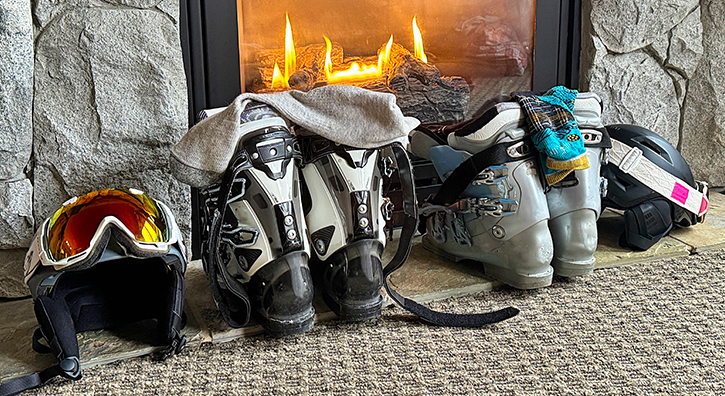0800 260 5082
Available from Monday to Friday from 9am to 7pm, and Saturday from 10am to 7pm. Closed on Sunday.
Available from Monday to Friday from 9am to 7pm, and Saturday from 10am to 7pm. Closed on Sunday.
When it comes to skiing, having the right clothing is just as important as having the right equipment—especially for women, who often face unique needs in terms of comfort, fit, and performance. Women’s ski clothes are specifically designed to provide warmth, freedom of movement, and weather protection without compromising on style or functionality. Whether you're carving down icy slopes or enjoying a gentle alpine trail, high-quality ski jackets, trousers, and layers can significantly enhance your overall skiing experience. With technical fabrics, tailored cuts, and added features like ventilation zips, snow skirts, and thermal linings, today’s ski wear for women offers the ideal balance between form and function. Investing in good ski clothing ensures that you're not only protected from the cold and wind, but that you also feel confident and comfortable throughout your time on the mountain.
Find out the best destinations for your ski holidays

Choosing ski clothes as a woman means looking beyond aesthetics. Ski apparel should feel comfortable and non-restrictive, even with multiple layers underneath. Many women's ski brands offer ergonomically tailored cuts, with added attention to comfort around the bust, hips, and waist. Features like adjustable cuffs, removable hoods, and stretch fabric panels add to overall comfort. Try moving around in your ski outfit before purchasing—raising your arms, crouching, or simulating ski movements—to ensure it supports your range of motion without pinching or riding up.
Different women have different heat needs, so the insulation level of your ski gear should reflect your cold tolerance and skiing environment. In colder alpine conditions, opt for synthetic or down-filled insulated jackets with windproof shells. In milder weather or during intense ski sessions, shell jackets with a focus on breathability may be more appropriate. Layering smartly gives you the flexibility to adapt your outfit throughout the day. Don't forget areas like the neck, wrists, and lower back, where women often feel the cold most—choose clothing with built-in insulation or closures to trap heat effectively.

Good ski gear must be both waterproof and breathable to ensure you stay dry inside and out. Waterproof ratings above 10,000 mm and taped seams are key for snow-heavy days or wet chairlifts. Look for jackets and trousers featuring membranes like GORE-TEX®, DWR coatings, or similar technologies that provide both protection and ventilation. Underarm zippers and breathable mesh panels help release excess heat and moisture, especially during active runs. This is crucial for women who plan to ski several hours or days in a row.

Before heading off, make sure to try on every item in your ski outfit, from base layer to jacket and accessories. This allows you to check sizing, layering compatibility, and comfort. Walk around, simulate ski positions, and identify any tight spots or discomforts. If you're renting gear, contact your provider in advance to ensure women’s sizes are available. Testing also helps you determine if anything is missing, such as extra gloves, underlayers, or a proper neck gaiter.

While ski boots are essential on the slope, don’t overlook après-ski footwear. Women’s snow boots should be waterproof, insulated, and slip-resistant for walking around the resort. Many female skiers also bring a comfortable pair of trainers or casual shoes for indoor wear. Footwear is often overlooked, but your toes will thank you after a long day of skiing.
When packing, consider weather forecasts and the length of your trip. Take spare socks, gloves, and thermal layers, since these are most likely to get wet or sweaty. Use packing cubes to separate gear by function—outerwear, base layers, and accessories. Don’t forget smaller but vital items like lip balm with SPF, hand warmers, and ski pass holders. By organising your gear efficiently, you’ll save time during your trip and ensure you're always prepared, no matter the slope or condition.

To keep your ski clothes in top condition, it’s important to follow the manufacturer’s care instructions carefully. Most technical fabrics require gentle washing with special detergents designed for waterproof and breathable materials. Avoid fabric softeners, which can damage the waterproof membranes, and always air dry your garments to preserve their performance.
Over time, ski clothes can suffer from wear and tear, especially in high-friction areas like seams and cuffs. Regularly inspect your gear for any damage and use repair kits or professional services to fix small tears or broken zippers. Additionally, reapplying a durable water repellent (DWR) treatment can restore the water resistance of your outerwear, ensuring you stay dry on the slopes.

When the ski season ends, proper storage of your ski clothes will extend their lifespan. Make sure your gear is completely dry before packing it away to prevent mildew and odors. Store your garments in a cool, dry place away from direct sunlight and avoid compressing them too much to maintain the insulation’s loft and effectiveness for next season.